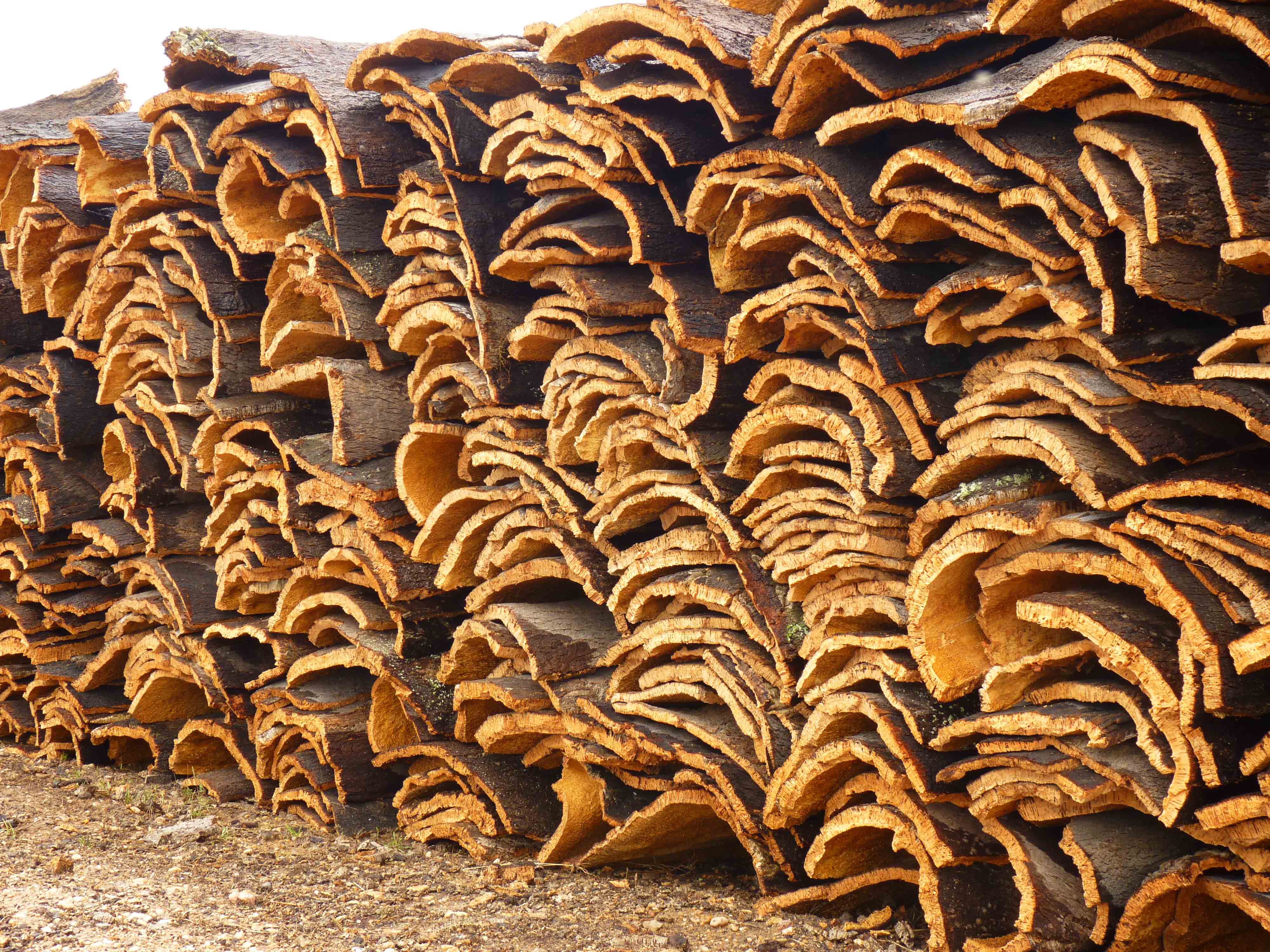Learn More About Cork

What is cork and how is it made?
Cork fabric (also known as cork leather) is an Eco-friendly, cruelty-free, sustainable and bio-degradable material with a leather-like feel made from the harvested bark of the cork oak tree. Stripping the bark does not harm the tree -better yet! - harvested trees can absorb up to 10 times more cO2 than non-harvested trees. The harvested cork bark is left outside to dry, it is arrange into huge blocks, boiled, then sliced into thin sheets and turned into cork fabric by adding a backing layer of cotton. The result is an incredibly soft and durable material which is waterproof, anti-bacterial, fire-resistant, and best of all, vegan. Every piece displays a unique pattern native to the tree that it was harvested from, so each product is unique.



Three examples of unique naturally occurring cork leather patterns.
Cork harvesting
The mighty cork oak tree is mostly grown and harvested in Portugal, which produces more than 50% of all cork oak worldwide. Disregarding the current mass production trends and Earth-destroying practices, the beautiful Quercus tree is planted and then allowed to grow for around 25 years before even a single harvest of bark can be cut from it! From then on, it is only stripped of its bark once every 9 years and not one single tree is put down by the extracting process.
Expertly harvesting the bark from the tree is also good for it it helps the tree produce more oxygen and fight away fungal infections. Cork oak trees that have been stripped of bark also absorb 3-5 times more carbon dioxide than trees with have not been stripped of bark. 10 million tons of C02 are absorbed by the Portuguese Quercus tree every year, as well as being massive producers of oxygen.
Cork oak tree and it's cork bark after harvesting, Alentejo, Portugal, 2020 © Dinis Muacho
Ancient cork harvesting techniques
Portugal is a pioneer of environmental regulation, having declared the first agrarian laws for the protection of cork in 1200. This was because the wood of this tree was the best for use in ship's masts and other parts, being found the strongest wood and never rotted. Since then, the cork oak tree has been protected as part of the Portuguese patrimony, and still to this day it is illegal to cut them down, and there are strict harvesting policies in place to ensure the preservation of an environment in which the trees and land are respected and allowing for more of them to be planted every day.
Since then, in terms of the cork harvest, very little has changed in Portugal. The tools used to harvest cork are the same, the techniques are the same, even harvesters say the only thing that has changed in centuries is that the ladders used are now made of aluminium instead of wood. It is still one of the hardest jobs in the world, done by hand, axe, and ladder in a region of the world where 40-degree temperatures are commonplace. The bark of the tree is extracted by cutting into it with an axe with almost surgical precision, in order not to harm the tree at all. This is not just a job that anybody can do, this is a skill passed down by generations of craftsmen through proud family and local traditions. The production techniques have also changed little, with very little electronic machinery being involved and most of the process being done by hand.


